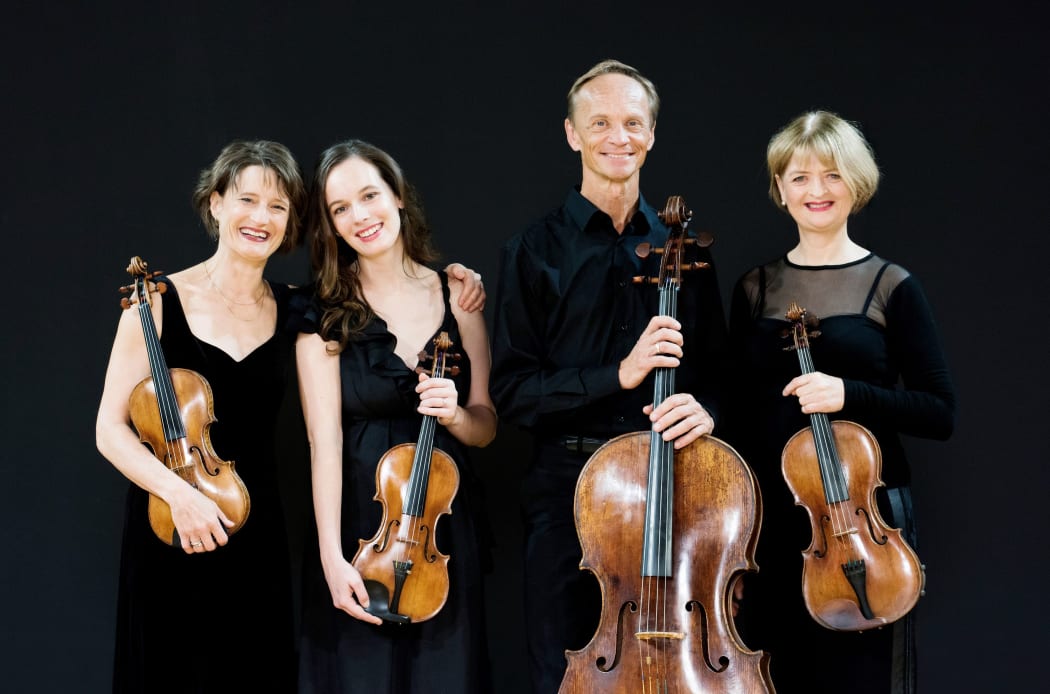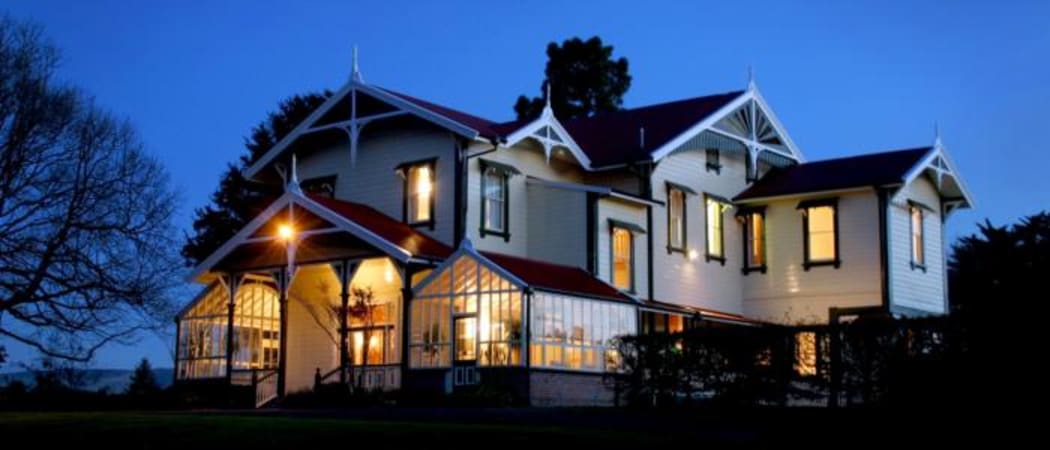
New Zealand String Quartet Photo: Supplied
The New Zealand String Quartet is certainly a taonga in the New Zealand cultural landscape. The group’s very first tour was 30 years ago in 1988, and to celebrate, they’re about to embark on a new nationwide tour called Turning Points, in which they will play some of the most groundbreaking works in the quartet repertoire.
First violinist Helene Pohl and cellist Rolf Gjelsten talk to Upbeat about these great works, the wonderful venues they’ll be playing in, and how the NZSQ members work together in rehearsal.
Many of the venues on the tour have special historical significance, harking back to an earlier era in New Zealand. As the quartet has delved into the history of those buildings, they've discovered some chronological connections with some of the works they’re playing.

Photo: Provided
The oldest venue on the tour is the gracious Caccia Birch House in Palmerston North, built by a Norwegian sawmiller in 1895, just two years after Debussy wrote his String Quartet in G minor. The property once stood on over 20 acres and incorporated a lagoon, stables and polo grounds. It gradually fell into disrepair in the 1970s but was rescued and restored in the early 1990s and now hosts weddings, concerts, garden parties and other special events.
They'll be playing Debussy’s String Quartet in the concerts in Featherston, Blenheim, Howick and Waiheke Island. Here's video of the NZSQ playing the work earlier this year on their new Vimeo channel.
Another of the works in the Turning Points programme, Webern’s achingly romantic Langsamer Satz, was written in 1905, coinciding almost exactly with the construction of three of the venues on the tour: the Hunter Council Chamber at Victoria University of Wellington (built in 1904 and one of the most significant Edwardian buildings in New Zealand), Auckland’s neo-Gothic St Matthew-in-the-City (1905) and the grand Civic Theatre in Invercargill (1906).
Webern’s playful Six Bagatelles, which also feature in the tour programme, were completed in 1913 – just three years before Anzac Hall in Featherston was built – and were published in 1924, a year after the completion of the neo-Baroque St Andrews on The Terrace in Wellington.
Other buildings of historical significance on the tour are the Blue Baths in Rotorua, built during the Great Depression and boasting “movie-style glamour”, and All Saints Church in Howick.
The NZSQ is looking forward to two concerts in The Treehouse at Cloudy Bay Vineyards and mid-tour return to the Lodge at The Hills, the private Queenstown home of Sir Michael and Lady Christine Hill, for an elegant evening of music, wine and canapés. The tour ends at Cable Bay Vineyards on Waiheke Island for a special ‘dinner plus concert’ package.
Beethoven was renowned as a trailblazer so it’s not surprising that each of the tour programmes features one of his most innovative quartets: the first of the Razumovsky quartets, his opus 95 (“Serioso”), and the extraordinary opus 131 quartet, which Robert Schumann felt stood “...on the extreme boundary of all that has hitherto been attained by human art and imagination."
Also included are Mozart’s brilliant and high-spirited “Dissonance” Quartet, Smetana’s poignant, semi-autobiographical “From My Life”, Debussy’s colouristic Quartet in G minor, Webern’s romantic Langsamer Satz and quirky Bagatelles, and the extraordinary Abhisheka by New Zealand’s own John Psathas.
Repertoire
Mozart: String Quartet No. 19 in C major, K. 465 (“Dissonance”)
Beethoven: String Quartet No. 11 in F minor, Op. 95
Beethoven: String Quartet No. 7 in F major, Op. 59, No. 1
Beethoven: String Quartet No. 14 in C♯ minor, Op. 131
Debussy: String Quartet in G minor, Op. 10
Psathas: Abisheka
Smetana: String Quartet No. 1 in E minor (“From My Life”)
Webern: Langsamer Satz & Six Bagatelles, Op.9

